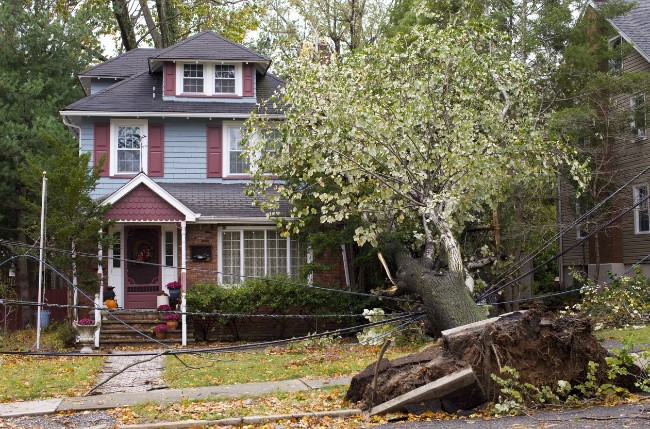We may earn revenue from the products available on this page and participate in affiliate programs. Learn More ›
Q: A big thunderstorm just came through our area and a tree fell on our house. My wife and I are kind of panicking because we’ve never had to deal with this before. What should we do?
A: A tree falling on a home can cause extensive structural damage. It’s also more common than you might think. According to a survey of 800 homeowners, 1 in 10 homeowners with trees in their yard have experienced a tree falling over onto their house.
If a tree falls on your house, get your family out of harm’s way, then focus on minimizing additional damage and making repairs.
What to Do if a Tree Falls on Your House
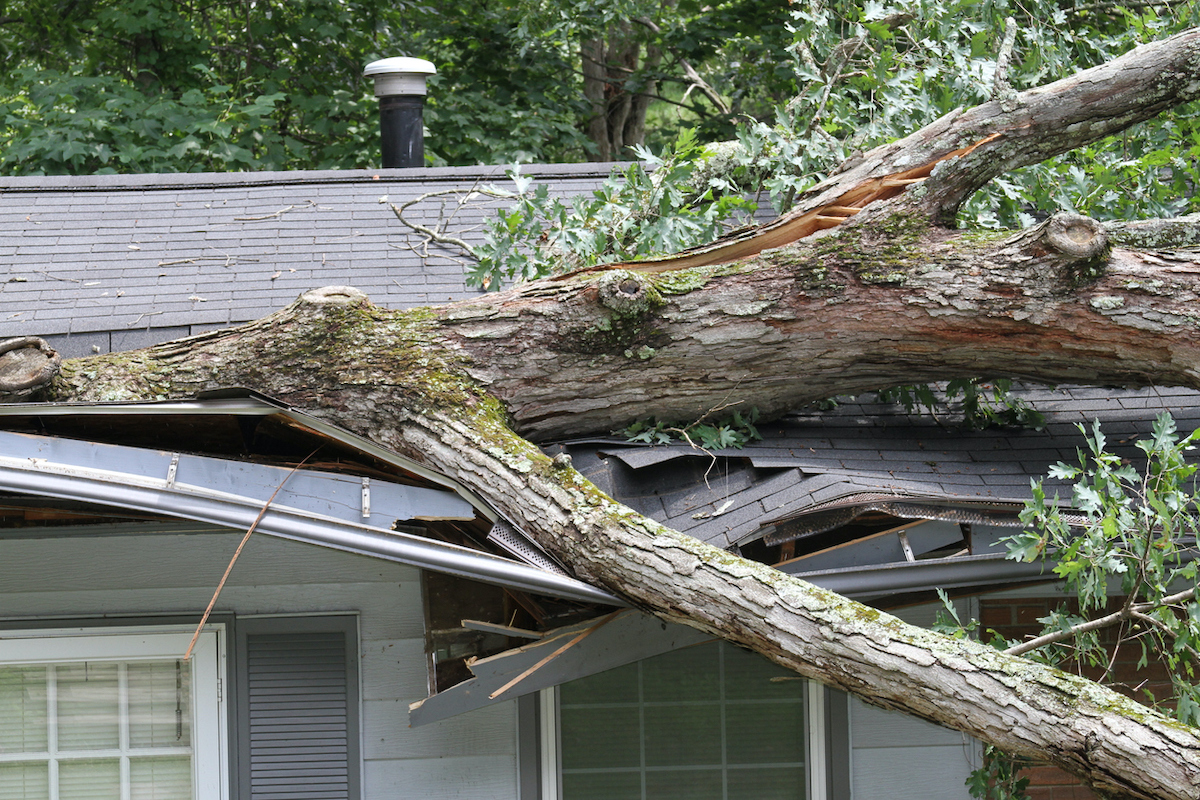
First, make sure that everyone in your household, including pets, is safe, then follow the tips below to get your home back in order.
If power lines are down, call 911 and the electrical company.
When a tree falls on the house, electrical power lines can come down with it, which can result in an increased risk of fire or deadly electrical shock. Signs that a power line is down include flickering lights or no electrical power in the house. From outside, you may be able to see if a power line is trapped in the fallen tree. In some cases, a downed line may still be functioning, but it still creates a risk, so shut off the power at your breaker box if you know or suspect that the tree took a line down with it.
Call the authorities and your local electrical company. If you smell smoke, get your family out of the house and contact any nearby neighbors who might be affected. The electrical company will dispatch technicians to repair the lines. Local law enforcement may need to block traffic on your street, and the fire department may send a unit to stand by until safety is restored.
If you have any concerns about how safe it is to remain in the home, seek alternative shelter.
It’s not always easy to determine the extent of the damage just by looking at it. If the fallen tree hit any major structural supports, affected the integrity of your roof, or hasn’t completely fallen over yet, it might no longer be safe to go into your house. Unless you’re certain that the house is safe to enter, find a different place to stay for a while and hire a contractor to inspect and assess the damage.
Document the damage and contact your insurance company.
After determining that your home is safe to enter, take photos of the damage, including all parts of the tree and all damage to your home. Then call your homeowners insurance company as soon as possible and let them know what happened. Share the photos you took to help them assess the damage. The company might also send an adjuster to your home to assess the damage.
Prevent further immediate damage.
A fallen tree can cause broken windows and holes in your roof or siding. It can also damage gas lines if the tree falls in the area where they enter your home. As a precaution, shut off the gas until you’re sure the lines weren’t damaged. You’ll find a shut-off valve near the meter. Use a wrench to turn the valve a quarter of a turn to the right.
Call a reputable contractor to tarp or board up broken windows and any holes in the roof or sides of your home. This step will protect your home’s interior from additional weather damage. If you want to cover broken windows yourself, do so carefully to avoid sharp glass, but it’s best to leave roof-tarping to the pros. Parts of the roof may not be stable enough to walk on safely.
What You Need to Know About Homeowners Insurance Claims if a Tree Fell on the House
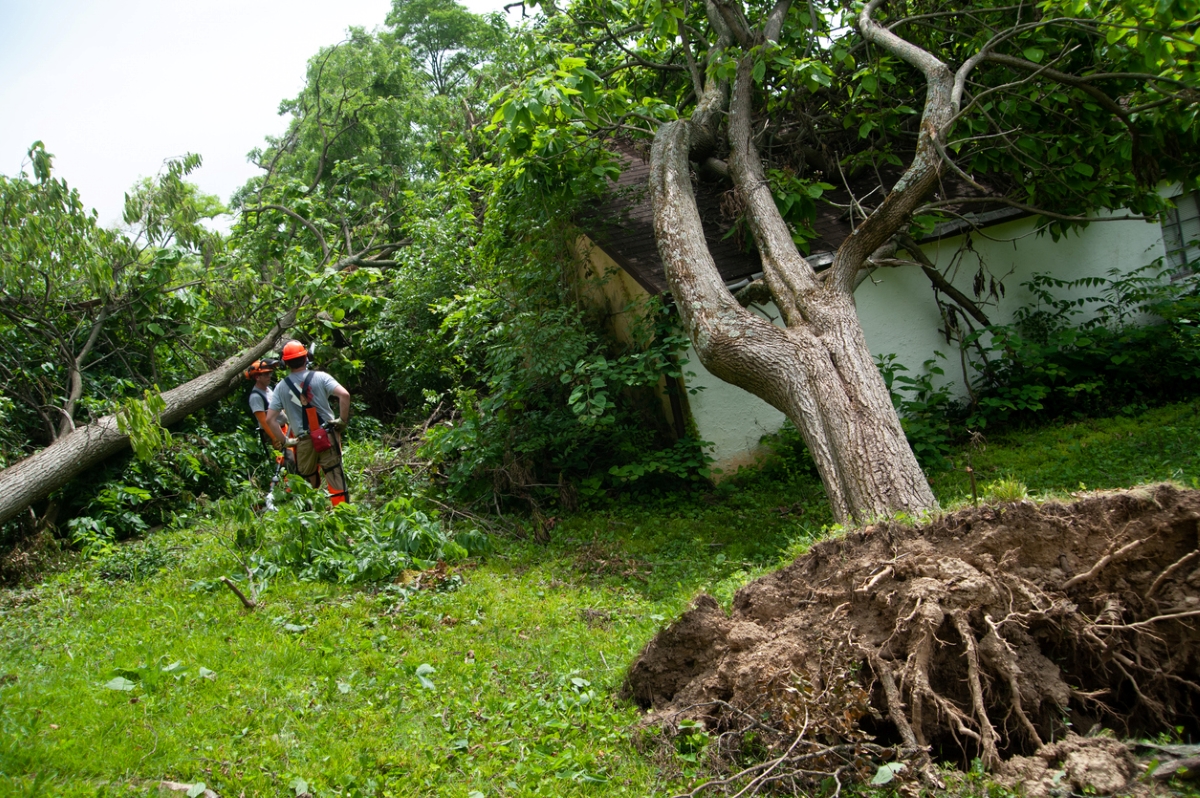
A tree falling on a house can cause extensive (and expensive) damage. The following tips will help you make the most of your insurance coverage if this disaster happens to you.
Obtain accurate documentation for homeowners insurance claims.
Take photos and videos of the damage—both outdoors and indoors—once it’s safe to do so. Let a roofing professional take pictures of the roof. Document broken windows, damaged siding, structural damage, and damage to the contents of your home. Don’t leave anything out; the pictures you take now are vital as evidence for your insurance claim.
Call your homeowners insurance agent to start the claims process.
You may be asked to consult two or three local contractors to get estimates for the repair work. Or, depending on your insurance company, a claims adjuster may be sent out to examine your home. In that case, the adjuster will determine the extent of the damage and the corresponding repair costs.
Consult your homeowners insurance policy to understand your financial obligation.
You will probably be required to pay a deductible, after which the insurance company will kick in for the balance of the repair costs—up to a certain amount, based on your individual policy terms. Common deductibles range from around $500 to $2,000, and sometimes even more, depending on premiums and coverage limits. If you’re like most homeowners, you probably haven’t read all the fine print in your policy, so go through it now so you know what to expect.
If an “act of nature”—such as thunderstorms, ice storms, and high winds—caused the tree to fall on the house, in most cases, your policy will cover the repair expenses, minus your deductible. Your policy will pay even if the fallen tree belongs to a neighbor or a municipality in an “act of nature” situation. Your claim might be denied, however, if you caused the tree to fall through reckless action, such as attempting to cut it down without professional assistance.
Hold off on permanent repairs until you and your insurer agree on the amount of your claim.
Depending on your policy, your insurer might impose limits on specific repairs, such as tree removal costs. If costs are beyond the permitted amount, you may be liable for the balance.
If the total amount offered by your insurer does not cover the cost of the estimated repairs, you have the right to appeal their decision and have them reevaluate your claim. If this happens, submit bids from contractors showing that the costs are higher than your insurer is allowing.
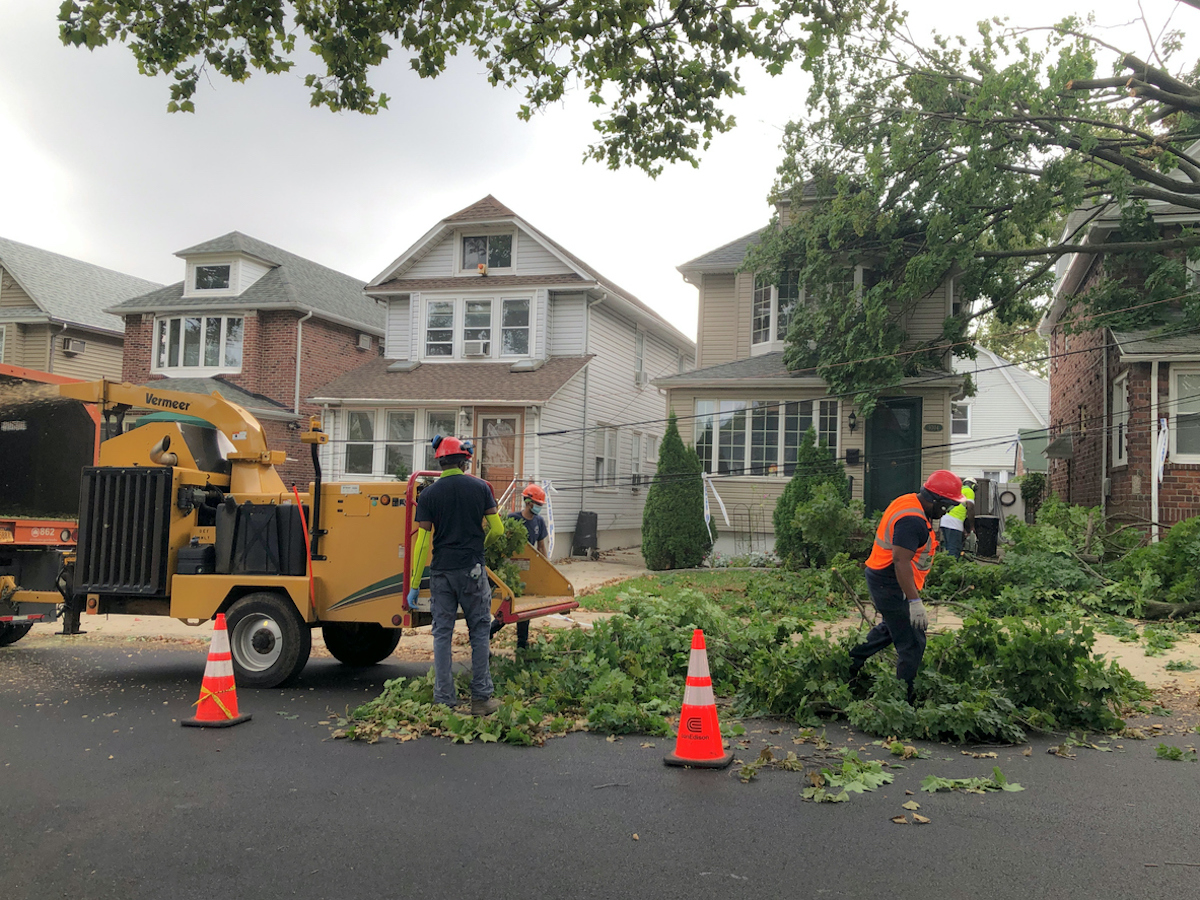
Keep track of the expenses you incur related to the damage.
Expenses incurred for emergency damage control are almost always covered, so save your receipts if you hired a contractor to fix the damage. If your home is not habitable, your insurance company may also reimburse you for some of the expenses related to temporary housing. But don’t assume all your expenses will be covered—call your agent to make sure.
Make your final payment only when satisfied with the contractor’s work.
Legitimate contractors often request payment for materials before they start work, but they should not ask for prepayment for their labor to make the repairs. If the repairs are extensive and will take more than a few weeks to complete, the contractor may reasonably ask for partial payments to be made on an agreed-upon schedule, but the final payment should be made only when the repairs are complete to your satisfaction.
FAQs
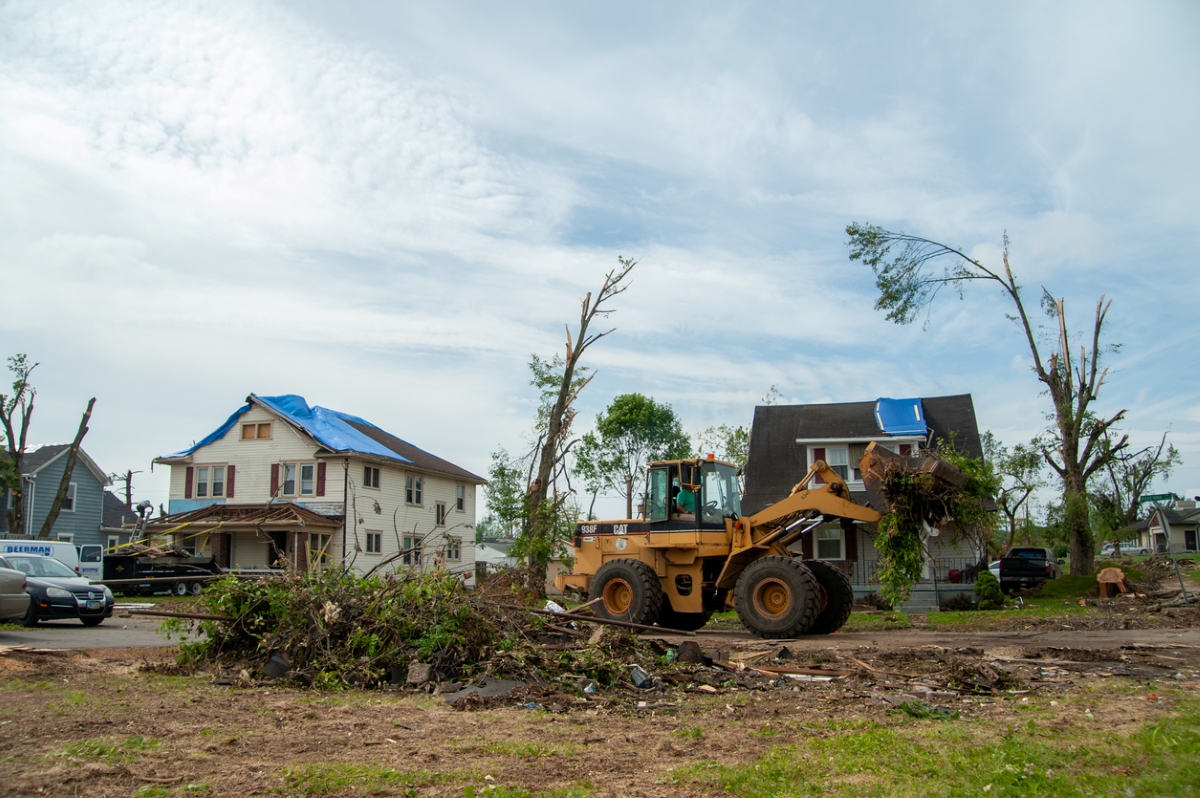
Q: Can I sue my neighbor if his dead tree falls on my house?
Laws vary by state, so you should contact a lawyer in your region if you’re considering suing. However, if you can prove that your neighbor knew about the dead tree and they failed to remove it in a timely fashion, they might be liable for the damages.
Q: If my tree falls on a neighbor’s house, who is responsible?
Responsibility depends on the circumstance. If the tree was healthy when it fell, then your neighbor’s insurance company is likely responsible for covering the damages. However, if your tree fell because you neglected to take care of it or you failed to remove the tree after noticing it was dead, you might be liable for the costs.
Q: Can a house withstand a tree falling on it?
Yes, but a tree falling on a house can cause extensive damage. It depends on the size of the tree and what it hits.
Q: Who is responsible if a tree falls?
In most cases, if an “act of nature” causes a tree to fall, the property owner who experiences the damage, along with that person’s insurance company, is responsible for the cost of repairs.
Q: Are fallen trees covered by homeowners insurance?
Yes, in most cases, fallen trees (as long as negligence didn’t cause the tree to fall) are covered by homeowners insurance.
Q: Which trees are most likely to fall?
Trees in poor health or with previous damage are more likely to fall during inclement weather. If you’re worried about a tree falling on your house, you’re in good company, as a recent survey found that 45% of homeowners share your concern.
Q: When should I be concerned about a tree falling?
If you spot disease or damaged limbs, your try might be susceptible to falling. Call a professional to remove unhealthy or damaged trees before disaster strikes.

